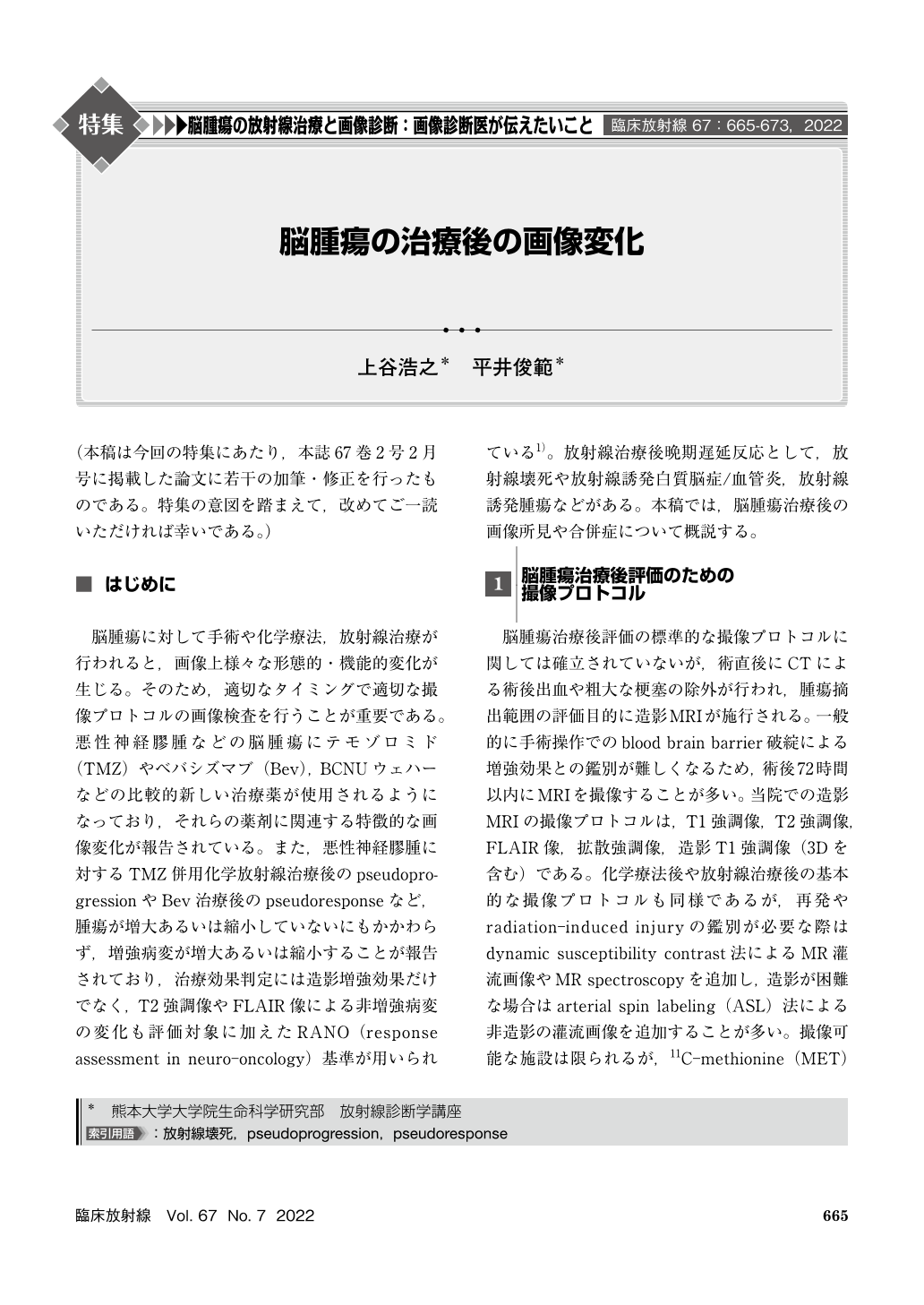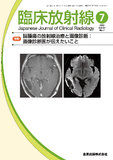Japanese
English
- 有料閲覧
- Abstract 文献概要
- 1ページ目 Look Inside
- 参考文献 Reference
脳腫瘍に対して手術や化学療法,放射線治療が行われると,画像上様々な形態的・機能的変化が生じる。そのため,適切なタイミングで適切な撮像プロトコルの画像検査を行うことが重要である。悪性神経膠腫などの脳腫瘍にテモゾロミド(TMZ)やベバシズマブ(Bev),BCNUウェハーなどの比較的新しい治療薬が使用されるようになっており,それらの薬剤に関連する特徴的な画像変化が報告されている。また,悪性神経膠腫に対するTMZ併用化学放射線治療後のpseudoprogressionやBev治療後のpseudoresponseなど,腫瘍が増大あるいは縮小していないにもかかわらず,増強病変が増大あるいは縮小することが報告されており,治療効果判定には造影増強効果だけでなく,T2強調像やFLAIR像による非増強病変の変化も評価対象に加えたRANO(response assessment in neuro-oncology)基準が用いられている1)。放射線治療後晩期遅延反応として,放射線壊死や放射線誘発白質脳症/血管炎,放射線誘発腫瘍などがある。本稿では,脳腫瘍治療後の画像所見や合併症について概説する。
Radiation therapy or chemoradiaotheraphy is a useful treatment for brain tumors. In recent years, new therapeutic agents for brain tumors have been introduced. Radiation therapy and chemotherapy for brain tumors can cause a variety of post-treatment imaging changes and complications. In this manuscript, we review several intracranial manifestations of therapeutic radiation, including radiation-induced injury, leukoencephalopathy, vasculopathy, cavernous malformation, radiation-induced meningioma, and radiation-induced glioma. Furthermore, we describe drug induced imaging findings, including pseudoprogression after chemoradiotherapy with temozolomide, pseudoresponse after bevacizumab, and imaging changes after BCNU wafer in high grade gliomas.

Copyright © 2022, KANEHARA SHUPPAN Co.LTD. All rights reserved.


